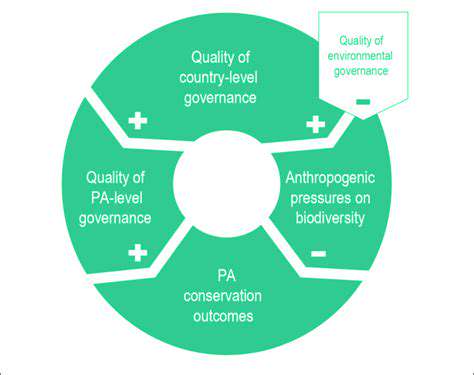genetic vulnerabilities, overlapping neurological processes, and environmental influences. This triad of connections underscores why treating patients requires looking beyond individual symptoms to their whole health picture.The Impact on Daily Functioning
Living with both migraine and fibromyalgia transforms ordinary activities into exhausting challenges. The cruel synergy of migraine's acute attacks and fibromyalgia's constant pain creates a debilitating cycle that erodes work performance, social connections, and personal aspirations. Many patients describe feeling trapped in bodies that constantly betray them.
This dual burden often leads to what patients call medical whiplash - oscillating between different pain types and intensities that demand contradictory management approaches. The emotional toll of this unpredictability can be as crushing as the physical symptoms.
Shared Neurobiological Pathways
Neuroscience reveals fascinating overlaps in how these conditions process pain. Both involve hypersensitive nervous systems that amplify pain signals abnormally, a phenomenon called central sensitization. The same brain regions light up in imaging studies for both conditions, particularly those governing pain perception and modulation.
Genetic Predisposition and Vulnerability
Family histories often reveal both conditions cropping up across generations, suggesting inherited vulnerabilities. While no single pain gene explains this pattern, researchers suspect multiple genetic variations interact to lower pain thresholds. These genetic factors may prime the nervous system to overreact to stimuli that others barely notice.
Diagnostic Challenges and Misdiagnosis
The symptom overlap between migraine and fibromyalgia creates diagnostic minefields. Many patients endure years of partial treatments before receiving complete diagnoses. Skilled clinicians now look for hallmark patterns like migraine's episodic nature contrasting with fibromyalgia's persistent background pain.
Advanced diagnostic protocols now incorporate detailed pain mapping, symptom diaries, and response patterns to different medications to tease apart these intertwined conditions.
Treatment Approaches and Management Strategies
Successful treatment plans resemble orchestral compositions - multiple therapies working in harmony. Medications targeting nerve pain often help both conditions, while specific migraine preventives address that component separately. The most effective regimens combine precision pharmacology with mind-body techniques like biofeedback and graded exercise.
Empowered patients who understand their conditions' interplay make the best progress. Support groups provide invaluable practical wisdom for navigating this complex dual diagnosis.


Impact on Daily Life: A Multifaceted Challenge
Migraine and Fibromyalgia: A Shared Impact on Daily Function
These conditions conspire to sabotage normalcy through what patients describe as good day roulette. Even basic tasks like grocery shopping or driving require contingency planning for sudden symptom flares. The cumulative effect resembles constantly rebuilding sandcastles against an incoming tide.
Many develop sophisticated pain budgeting systems, rationing energy for essential activities while sacrificing social engagements. This necessary triage often leads to misunderstandings from those who don't grasp the conditions' unpredictability.
Pain Management Strategies: A Collaborative Approach
Modern pain management resembles a three-legged stool: medical treatments, lifestyle adaptations, and psychological support. The most successful patients become expert self-observers, tracking subtle warning signs that precede symptom flares. Preemptive strategies often prove more effective than reactive ones for these intertwined conditions.
Temperature therapies, from ice caps for migraines to warm baths for fibromyalgia, provide non-pharmacological relief options many patients swear by.
Impact on Cognitive Functioning
Fibro fog and migraine-related cognitive dysfunction create a perfect storm of mental impairment. Patients describe frustrating experiences like forgetting mid-sentence why they entered a room or struggling with once-simple calculations. These cognitive symptoms often prove more distressing than physical pain for professionals and students.
Emotional Well-being and Mental Health
The psychological impact mirrors chronic grief - mourning lost abilities while adapting to new limitations. Depression frequently stems not from poor coping, but from realistic assessments of life-altering symptoms. Quality therapists help patients navigate this emotional terrain without pathologizing normal reactions to abnormal circumstances.
Peer support groups provide unique validation that even well-meaning healthy loved ones cannot offer.
Sleep Disturbances: A Common Thread
Sleep problems create a vicious cycle - pain disrupts sleep, and poor sleep exacerbates pain. Many patients find their symptoms follow circadian rhythms, with evenings and mornings proving particularly challenging. Strategic napping (when possible) helps some break this cycle.
Social and Interpersonal Relationships: Navigating Challenges
Relationships undergo stress tests when chronic pain enters the equation. Partners often struggle between supportive and enabling behaviors, while friends may quietly drift away. The most resilient relationships develop new communication tools, like non-verbal signals for bad pain days.
Setting realistic expectations becomes crucial - explaining that cancellations reflect medical necessity, not personal rejection.
Disclaimer: All articles on this site are original, please do not reprint

